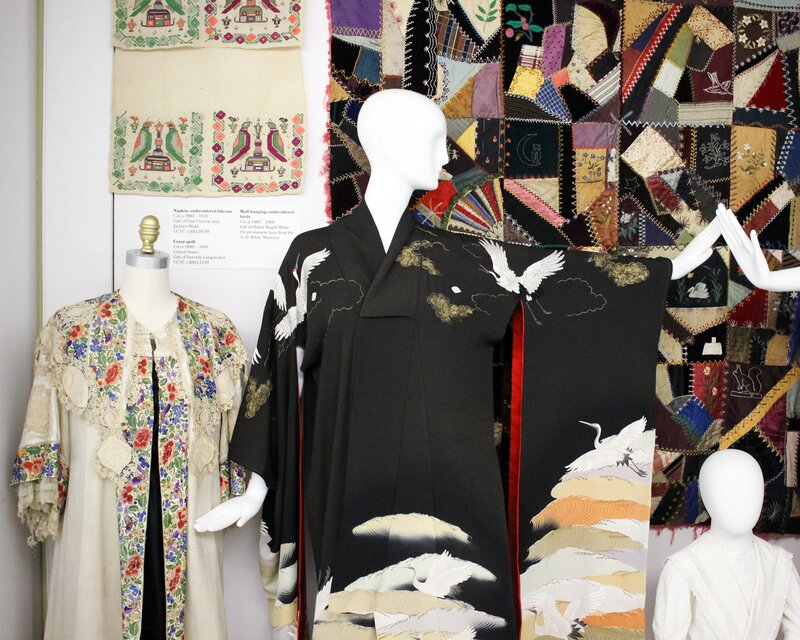Fashion and Feathers in Fashion
Birds and their feathers have long captivated fashion designers. Think for a minute about your wardrobe: how many birds are represented on your clothes, jewellery, and accessories? You are not alone: across the globe people have been wearing birds on their bodies—actual feathers and representations thereof—since time immemorial. Designers take inspiration from the natural world and have abstracted, stylized, and re-presented birds in fibre form; at the same time, they have also exploited birds, with some species nearly hunted to extinction for their plumes.
Feelings of ambivalence often characterize our relationship to fashion: we love the beauty of clothes and like to feel good in what we choose to wear. On the other hand, we are faced with wearing the tragedies that accompany production, especially within a capitalist economic system. In order to manufacture the clothes that we wear every day, human labour, natural resources, and the environment are often exploited. Yet, from destruction of the natural world something beautiful may arise.
Fashion & Feathers explores the complex and nebulous space between inspiration and exploitation. The exhibition is divided into two sections: inspiration and exploitation. The inspiration portion was organized according to the textile design technique used to render the bird (i.e., printing, resist dye techniques, structural textile design, and embroidery). The second half of the exhibition focused on the exploitation of birds for their feathers. Feathered garments and accessories were paired with illustrations and scientific specimens of the same birds exploited for these fashions. The display case below features flat textiles, accessories, and jewellery that have been created through the exploitation of birds for their feathers (right side) as well as pieces that were inspired by birds (on the left side).
While separate sections of the exhibition might suggest a hard line between inspiration and exploitation, the individual pieces tell a much more complex story. Inspiration is sometimes accompanied by exploitation. For example, a factory producing synthetically dyed textiles with a design inspired by birds may be simultaneously polluting the very habitats of those same birds. On the other hand, tragedy may inspire productive change, like the founding of the Audubon Society, which arose in direct response to the fashion industry’s exploitation of birds.
We begin interrogating these challenging questions with examples of inspiration and exploitation. Throughout the exhibition, we have endeavoured to identify as many birds as possible, hypothesizing about abstracted representations of birds and identifying actual feathers. We invite you to “go birding” in this exhibition. Look closely at each item, identify birds, and in doing so, reflect upon the beauty and tragedy of fashion and feathers. After exploring Fashion & Feathers, why not continue your birding adventures? “Go birding” in your own space—whether this involves looking for bird inspired pieces in your closet or visiting your local park to observe these feathered creatures in action.
Image courtesy of Cornell University, Ithaca, NY, USA.



